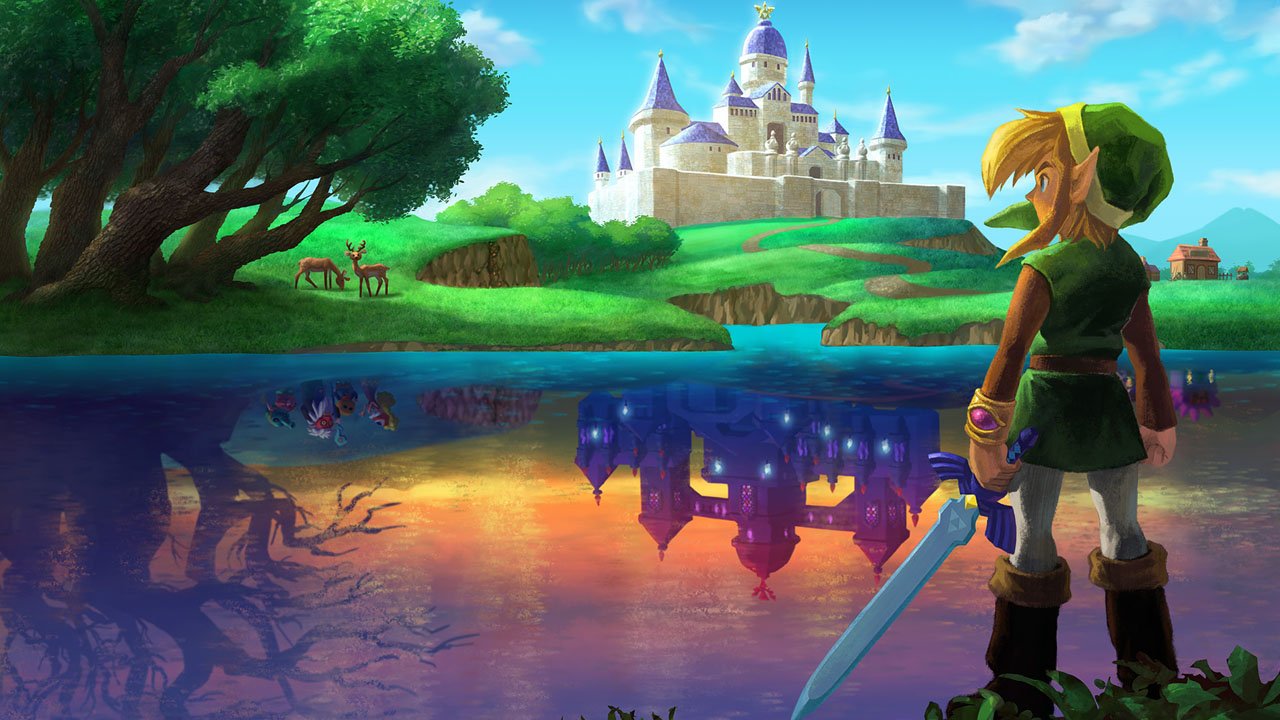It seems worthwhile to take a few steps back from the games we like most once in a while, if only to try to figure out why they appeal to us in the first place. Some of history’s best-loved titles—Super Metroid, Final Fantasy VII, Super Mario Bros. 3—were released during many players’ formative years, making it difficult to separate the magic of first falling in love with games in general from the actual merits of the experiences themselves. There isn’t anything inherently wrong with continuing to harbour an irrational love for a specific title or series (Metal Gear Solid is my personal albatross), but there is always value in looking at our favourite games from a more detached perspective in order to better understand what it is that has turned them into nearly universal favourites.
Videogame nostalgia has been on my mind again lately since I’ve just finished playing through The Legend of Zelda: A Link Between Worlds, last year’s 3DS entry to Nintendo’s long-running series and the first of its kind that I’ve truly enjoyed since Ocarina of Time. Despite appreciating the series’ exceptional production values and often striking visual design, Zelda’s core design principles have never resonated with me to the degree that they do for others. I love the idea of being plunked down into the vast world of Hyrule, exploring its dungeons and towns to find secret items and solve environmental puzzles. But, after a few hours of doing just that I typically become disengaged. The accolades piled upon A Link Between Worlds made me curious, though. I like Nintendo’s dual-screen handheld and enough time had passed since I’d taken a stab at a Zelda game that it felt like a good idea.

Unexpectedly, I liked A Link Between Worlds more than I thought possible. The game was full of the kind of series staples that I usually meet with indifference. Link has to save Princess Zelda by conquering a set of familiarly themed dungeons (water, sand, lava, ice, etc.), collecting new equipment, and scouring every inch of a detailed Hyrule “overworld.” It’s tough, in light of just how strictly it adhered to series formula, for me to explain why this Zelda game in particular grabbed me. I mean, it’s even a direct remake of/sequel to the classic A Link to the Past, a game I played and tired of only months before. Basically, I went in to the game without the same frame of reference that so many others must have. No warm memories of past Zelda titles helped make the experience more endearing.
It’s testament to A Link Between Worlds’ unique design, then, that the feeling it gave me was one of nostalgia for a style of game I had no actual reason to harbour nostalgia for. Despite having played any number of titles developed by studios that have obviously internalized the design lessons set out by the many great Zelda games of the past decades, limited time with the series itself means that I don’t have any memories of its tropes. I didn’t feel anything when I discovered that the 3DS’ game’s map mirrored the one from A Link to the Past; any other specific call-backs to previous titles would have been lost on me as well. So, why did A Link Between Worlds make me feel like I was playing an updated game from my youth?
I think the basic appeal of the Zelda games is their ability to make players feel as if they’re kids again, and this is exactly what the latest entry accomplishes. Despite entering into A Link Between Worlds without nostalgia for the series itself, the experience made me wistful for the sense of adventure that came from exploring my rural hometown during summer breaks, making up ghost stories about abandoned houses and biking across town with my friends. Link sets out across Hyrule with the same type of naïve wonder that most of us have while young.
The game’s mechanics and level design—simple enough to be approachable while packed with the kind of complexity that promises hidden depth—couples with the adventure story to represent a facsimile of childhood. In this sense it’s easy to see how those who played these games while growing up continue to love them so much. And why someone coming to the series for the first time with A Link Between Worlds—an entry that captures the essential spirit of the games so well—would also feel a bit of nostalgia even for something that is new. When we talk about videogame nostalgia we don’t often remember that the feeling can be evoked not just by references to past games, but to the players’ past life experiences, too.




